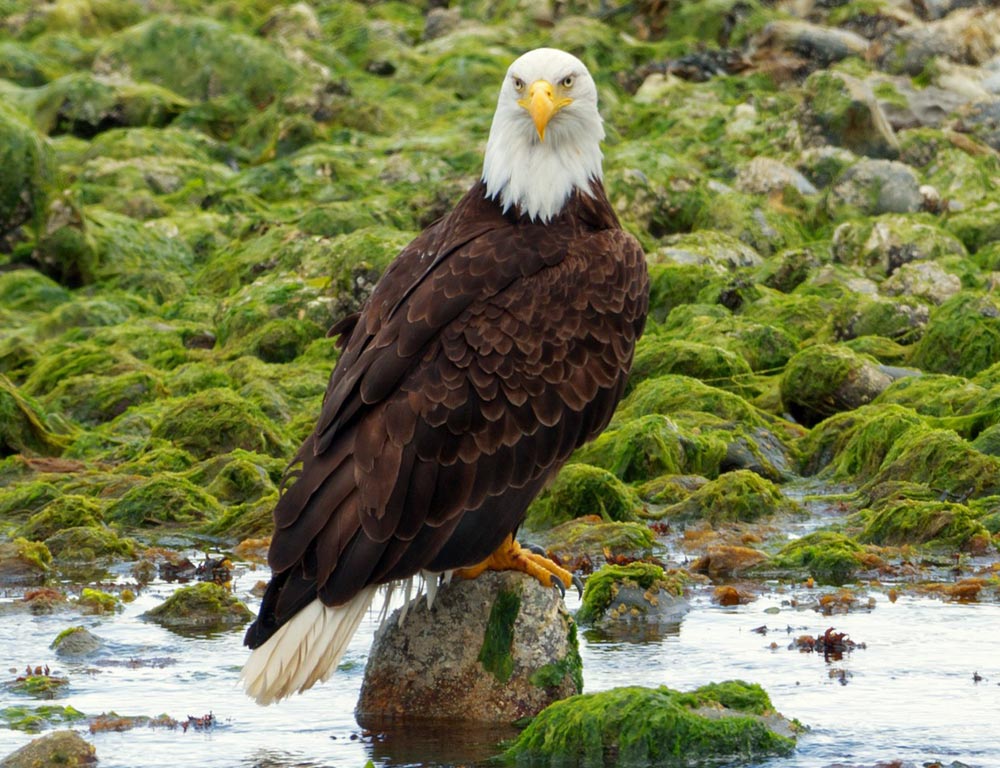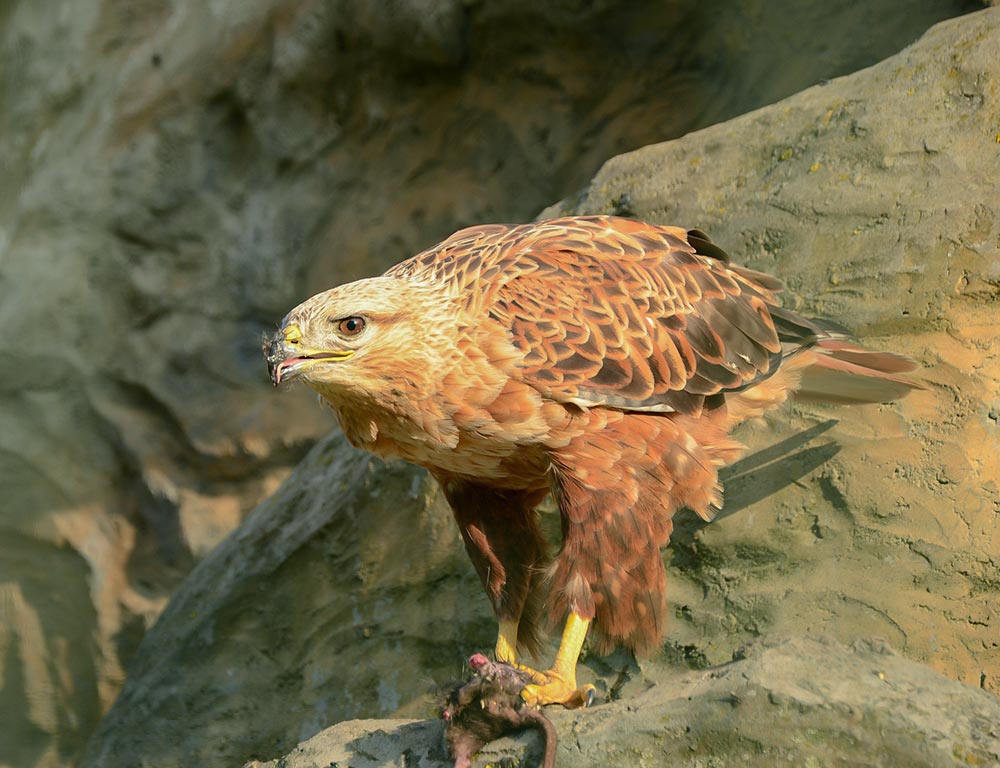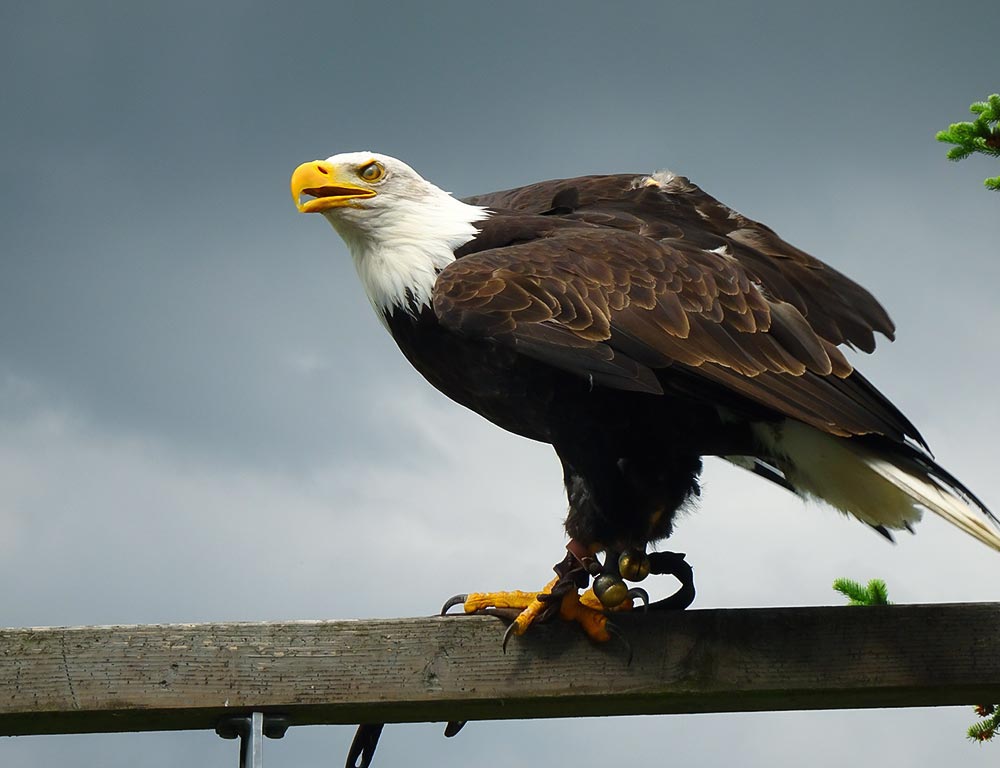Georgia is home to a remarkable population of eagles, playing a vital role in the state’s diverse ecosystem.
The majestic Bald Eagle (Haliaeetus leucocephalus) and the impressive Golden Eagle (Aquila chrysaetos) are Georgia’s primary species, captivating residents and wildlife enthusiasts alike.
These awe-inspiring birds of prey contribute to the state’s ecological balance by controlling various prey populations, ensuring a healthy environment. The lush landscapes, including rivers, lakes, and forests, provide ideal habitats for these iconic raptors.
As symbols of strength and freedom, eagles in Georgia testify to the state’s commitment to conservation efforts and environmental stewardship.
Understanding their habits, habitats, and significance in the local ecosystem enriches our appreciation for these majestic birds and the delicate balance they maintain in Georgia’s natural world.
Types of Eagles in Georgia
Georgia boasts a vibrant eagle population, with the Bald Eagle and Golden Eagle taking center stage.
These majestic birds contribute significantly to the state’s ecological harmony, embodying strength and freedom in their vital role within Georgia’s diverse ecosystem.
1. Bald Eagle

- Scientific Name: Haliaeetus leucocephalus
- Category: Sea and Fish Eagles
- Population: Increasing
- Life Span: Up to 28 years in the wild
- Size: 28-40 inches (length)
- Weight: 6.5-14 pounds
- Food: Mainly fish, but also birds and small mammals
- Wingspan: 6.1 to 7.0 feet
- Status: Least Concern (Listed under the Bald and Golden Eagle Protection Act)
The iconic Bald Eagle, a symbol of strength and freedom, is a prominent resident of Georgia. With a striking white head and tail, this sea and fish eagle species thrives near large open water bodies.
The population of Bald Eagles in Georgia is increasing thanks to conservation efforts and the banning of DDT, a harmful pesticide. Bald Eagles exhibit impressive lifespans of up to 28 years in the wild.
They boast a substantial size, ranging from 28 to 40 inches long and weighing between 6.5 and 14 pounds. Their wingspan, a symbol of their majestic flight, spans from 6.1 to 7.0 feet.
Feeding predominantly on fish, Bald Eagles also consume birds and small mammals. Their powerful talons and hooked beaks aid in hunting and catching prey.
These raptors build large nests in trees near water, contributing to their survival and reproductive success. Classified as “Least Concern,” the Bald Eagle is protected by legislation, ensuring its continued presence and conservation in Georgia.
2. Golden Eagle

- Scientific Name: Aquila chrysaetos
- Category: True Eagles
- Population: Stable
- Life Span: Up to 30 years in the wild
- Size: 27-33 inches (length)
- Weight: 6.6-15 pounds
- Food: Mainly mammals, including rabbits and ground squirrels
- Wingspan: 6.0 to 7.5 feet
- Status: Least Concern
The Golden Eagle, a true eagle species known for its golden-brown plumage, is a majestic inhabitant of Georgia. With a stable population, these raptors are versatile hunters, adapting to various habitats, from mountains to grasslands.
Golden Eagles showcase remarkable lifespans of up to 30 years in the wild. Their size ranges from 27 to 33 inches in length, with a weight varying between 6.6 to 15 pounds. The 6.0 to 7.5 feet wingspan emphasizes their prowess in soaring and hunting.
Predominantly carnivorous, Golden Eagles primarily feed on mammals, favoring rabbits and ground squirrels. With strong talons and a sharp beak, they are adept hunters.
Classified as “Least Concern,” the Golden Eagle’s stable population in Georgia is supported by conservation efforts and their ability to adapt to various landscapes.
Where to Spot Eagles in Georgia?
Georgia offers splendid opportunities for eagle watching, with its diverse landscapes providing ideal habitats for these majestic birds of prey. Here are five descriptive points highlighting the best spots to spot eagles in Georgia:
Lake Lanier
Nestled in the foothills of the North Georgia Mountains, Lake Lanier is a haven for eagles.
The lake’s expansive waters and surrounding woodlands provide an excellent environment for spotting these majestic birds, especially during winter.
Altamaha River Corridor
The Altamaha River and its vast corridor, including areas like the Altamaha Wildlife Management Area, are prime eagle habitats. The mix of wetlands, forests, and open water creates an ideal setting for eagles to hunt and nest.
Okefenokee Swamp
The Okefenokee Swamp is a unique and expansive wilderness home to a thriving eagle population. The swamp’s diverse ecosystems, including blackwater lakes and cypress forests, attract eagles seeking abundant prey.
Chattahoochee National Forest
The Chattahoochee National Forest, with its rugged mountains and pristine rivers, is a scenic locale for eagle-watching. Rivers like the Chattooga provide ample opportunities to observe eagles in flight and during hunting activities.
Walter F. George Reservoir (Lake Eufaula)
This large reservoir on the Chattahoochee River offers a mix of open water and wooded shorelines, creating an ideal habitat for eagles.
The lake’s abundance of fish supports a healthy eagle population, making it a favored location for enthusiasts.
Whether exploring the lakeshores, riverbanks, or vast swamplands, these Georgia locations provide a glimpse into the daily lives of eagles.
Observing their majestic flights and understanding their habitats enhances the appreciation for these birds’ vital role in Georgia’s rich and diverse ecosystems.
Ecological Significances of Eagles in Georgia

Eagles in Georgia hold significant ecological importance, playing a crucial role in maintaining the balance of the state’s diverse ecosystems. Here are several ecological significances of eagles in Georgia:
Top Predators in the Food Chain
Eagles, particularly the Bald Eagle and Golden Eagle, serve as apex predators in Georgia’s food chain.
Their presence helps control the populations of smaller prey species, preventing overgrazing and ensuring a healthier balance in the ecosystem.
Indicators of Ecosystem Health
The well-being of eagle populations is closely tied to the overall health of their habitats.
A thriving eagle population indicates the presence of clean water, diverse prey species, and suitable nesting sites, making them valuable indicators of ecosystem health.
Carrion Cleanup
Eagles are opportunistic feeders and often consume carrion. By scavenging on carrion, they contribute to the cleanup of dead animals, preventing the spread of diseases and maintaining the cleanliness of their habitats.
Regulation of Mid-sized Predator Populations
Eagles help regulate populations of mid-sized predators such as foxes and raccoons.
This control prevents these predators from becoming overabundant and impacting smaller wildlife populations, contributing to the overall stability of the ecosystem.
Seed Dispersal
Eagles inadvertently aid in seed dispersal by transporting seeds from one location to another.
This can contribute to the regeneration of plant species in different areas, promoting biodiversity and supporting the overall health of Georgia’s flora.
Tourism and Conservation Awareness
The presence of eagles attracts wildlife enthusiasts and tourists, fostering a greater appreciation for conservation efforts.
This interest, in turn, supports local economies and encourages the implementation of conservation measures to protect eagle habitats.
Wetland Conservation
Eagles often inhabit wetland areas, which are critical ecosystems.
Their presence highlights the importance of wetland conservation, as these areas serve as crucial habitats for numerous plant and animal species, including those that eagles prey upon.
Natural Pest Control
By preying on rodents and other small mammals, eagles contribute to natural pest control.
This helps prevent population explosions of pests that could otherwise negatively impact agricultural areas and disrupt the balance of local ecosystems.
Cultural and Symbolic Significance
Eagles hold cultural and symbolic significance, serving as powerful symbols of strength and freedom.
This cultural reverence often translates into a collective commitment to environmental stewardship and conservation efforts, benefiting the broader ecological landscape.
Eagles in Georgia act as key players in the intricate web of ecological relationships, influencing population dynamics, nutrient cycling, and habitat maintenance.
Recognizing and preserving the ecological roles of eagles is essential for the overall health and resilience of Georgia’s diverse ecosystems.
How to Preserve Eagles in Georgia?
Preserving eagles in Georgia involves a combination of habitat protection, conservation initiatives, and community engagement. Here are several strategies to ensure the long-term conservation of eagles in the state:
Habitat Preservation
Identify and protect crucial eagle habitats, including nesting sites, roosting areas, and foraging grounds. Establish wildlife corridors to connect fragmented habitats and ensure a continuous and safe environment for eagles.
Wetland Conservation
Prioritize the conservation of wetlands, as these areas are vital for eagles and their prey. Implement measures to safeguard water quality, control pollution, and preserve the integrity of wetland ecosystems.
Regulate Human Disturbance
Enforce regulations and guidelines to minimize human disturbance near eagle nesting sites. Educate the public about the importance of maintaining a respectful distance to avoid stress to nesting pairs and their offspring.
Collaborative Conservation Programs
Foster partnerships between government agencies, conservation organizations, and private landowners. Develop and implement conservation programs that address habitat preservation, water quality, and overall eagle protection.
Power Line Awareness and Mitigation
Collaborate with utility companies to identify and mitigate the risk of power line collisions, a significant threat to eagles. Implement measures such as marking power lines and modifying their locations to reduce collision risks.
Community Education and Outreach
Conduct educational programs and community outreach to raise awareness about the importance of eagle conservation.
Engage local communities in understanding the ecological roles of eagles and encourage their active participation in conservation efforts.
Research and Monitoring
Support ongoing research and monitoring projects to gather data on eagle populations, nesting success, and potential threats. This information is crucial for adapting conservation strategies and addressing emerging issues promptly.
Rehabilitation and Rescue Programs
Establish or support rehabilitation and rescue programs for injured or sick eagles. These programs contribute to the overall health of eagle populations by addressing individual cases and rehabilitating eagles for release back into the wild.
Legislation and Regulation
Advocate for and enforce legislation that protects eagles and their habitats. Ensure that regulations address potential threats such as habitat destruction, disturbance, and pollution, providing legal frameworks for conservation efforts.
Promote Responsible eagle-watching
Encourage responsible eagle-watching practices among residents and tourists. Provide guidelines on ethical viewing, emphasizing the importance of minimizing disturbance and respecting the natural behaviors of eagles.
By implementing these strategies, Georgia can create a comprehensive and effective approach to preserving eagles, ensuring that these majestic birds continue to thrive in the state’s diverse ecosystems for generations to come.
Wrapping Up
Through a combination of habitat preservation, community engagement, and conservation initiatives, Georgia can ensure the continued success of these iconic birds.
With their cultural significance and ecological roles, Eagles serve as ambassadors for broader conservation efforts, inspiring a collective commitment to environmental stewardship.
The delicate balance between human activities and the needs of these majestic raptors requires ongoing dedication and collaboration among government agencies, conservation organizations, and local communities.
As guardians of the skies and symbols of strength, eagles enrich Georgia’s diverse ecosystems and contribute to the state’s unique identity.
By prioritizing their well-being and implementing sustainable practices, Georgia can secure a future where eagles soar freely, embodying the resilience and vitality of the natural world within the heart of the Peach State.